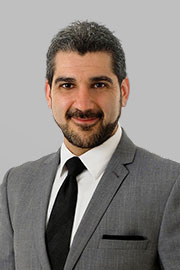- Nov/29/22 4:20:00 p.m.
One of the government members, with a big smile on his face and with the purest intentions, asked our member what carbon sequestration is and if she believes that it is very important moving forward.
To any of the two who have spoken: Tell us about carbon sequestration. Is it something you believe is important moving forward?
We are dealing with an omnibus bill today. When government members—and I hear this, because most of us here in the chamber are from the class of 2018; I’m not sure if it holds true for today, but definitely, overall, that’s really what we are. So when we hear stories of the past, pre-2018, I always listen very intently. I always love hearing those stories. One of the things I always heard about was the omnibus bill and how the Liberal government of the time would introduce huge swaths of new information. There was a lot of stuff in there, and you would have to make a decision. So why is it significant?
We have a bill before us today that basically amends nine acts; it has 28 items within it. We’ve seen much larger omnibus bills in the past, but definitely, it’s far-reaching. There’s a lot of change that’s being proposed here. Out of the nine individual acts, two ministries have determined that amendments to their individual legislation may result in environmental impact and have posted proposed notices on the Environmental Registry.
When our lead and my friend talked about this bill and made his big submission and his speech on it, he referred to this bill as a “sleeper bill”; he actually referred to it in a positive way. Well, I don’t want to see “sleeper bills” from the government. But it is a welcome change, because a lot of the bills—I have to say, on this side of the House, I wouldn’t use the word “sleeper”; it’s more of a nightmare with some of the proposed things that they change.
The other thing is, is there really anything that’s “sleeper” by this government? Here in opposition, big changes get suggested and made. Government comes in with a slew of changes and amendments to regulations, but what is always underneath this? What lies beneath that? The government doesn’t share with us what their priorities necessarily are in very specific ways. We see bills that come here, or motions, and they describe far-sweeping changes, and in a very short time, we get together, we reach out to our own researchers, we do our own research, and we try to figure out, is this something that’s going to benefit Ontario or not?
I must say that while it is important to continuously make improvements, if it’s to regulations—for instance, the Auditor General is constantly bringing out reports pointing out ways in which government can improve. Certainly, on this side of the House, when there is improvement, we want to see it.
I must mention that there are things that are not being discussed right now, like the health care crisis that we are facing in this province. It’s interesting, because the government will talk about housing as a crisis, but they won’t refer to health care as a crisis. I think it was called a “situation” before, by the minister. Is it because they feel that they don’t have a solution to it? If you ask government members, they say that they have a solution to the housing crisis, but when it comes to health care, they won’t refer to it as a crisis.
Last week, I met with several front-line nurses, and they are sounding alarms. They talk about Bill 124. That has led many nurses to leave the profession they love. Bill 124 needs to be replaced immediately if we’re going to begin to undo some of the damage that the government has inflicted. Bill 124 was ruled unconstitutional today. I think that’s a very clear message to the government that they are going in the wrong direction in many ways.
I have to agree with the comments of a colleague who said the government is often penny-wise and pound foolish, because this government has tied the hands of hospitals with Bill 124. Hospitals had to hire more temporary nurses. In fact, they are spending, we’ve heard, up to 550% more on temporary nurses, funnelling public dollars into private pockets. This is privatization—and it’s a classic Conservative move, because you don’t want to properly fund the public system, and if it fails or is struggling, then it opens the door to privatization as a solution. I, for one, believe that’s insidious, and I don’t think it’s fair.
Titles of bills do not reflect the content or intention of legislation within it. Yesterday, we heard the government lament that the province is drowning in red tape. You could just picture the visual: We’re strangled in red tape and there’s so much of it you’re drowning in it. Language like “it’s a burden”—when it describes the regulatory functions of law.
It believes that legislation will save money for cities, but then it also introduces legislation like Bill 23 and 39, which will actually increase what cities will have to spend.
Bill 23 reduces development charges and shifts the burden to build important infrastructure to municipalities and, therefore, residents when they pay their property taxes.
Regulations are the details of law. They’re the nuts and bolts which transform our ideas into reality. The government has the habit of packaging laws together and sometimes—the devil is always in the details. This bill, for example, has 28 individual items, and it amends nine acts. Regulations keep us safe. Does red tape exist out there? It does. If something is true red tape, we’ve got to deal with it. But overall, regulations keep us safe.
Yesterday, the minister mentioned, “We have also proposed regulations that will reduce red tape for operators of certain types of hotel spas and hot tubs, such as in-suite hot tubs or tubs on a private balcony or a deck intended for the exclusive use of its guests, by exempting them from the public pools regulation. Signage requirements, of course, will remain in place to ensure the public is aware of any potential risk.” We recently heard in the news about an outbreak in an Ontario spa because of a pool. Simply putting up a sign warning people that this could happen isn’t enough. There’s a duty to prevent harm, and putting up signage to avoid liability and to shift risk to Ontarians is not the answer.
In 1976, we introduced a requirement to wear seat belts, something that is so basic and second nature to us now.
There were regulations that were in place, here in Canada, in our banking sector that protected us, and at the time, there was the big recession that happened in the States with the banking system. Regulations were put in place that—they weren’t here in Canada, we would have had a similar fate to the United States.
Walkerton is the last one I’ll mention for now. We saw privatization and a number of reasons that led to the crisis and the problem that was there, but one of them was a lack of provisions made for notification of results to municipal authorities. So here you see privatization and a lack of regulations to allow for the reporting of what’s actually going on.
So is everything red tape? I know this government loves to take away all forms of regulation, but I don’t know if that’s always the answer. Again, regulations define the quality of life we lead. They shape our environment, quite literally.
Take the greenbelt, for example. It can’t be replaced. The government thinks it’s a zero-sum game to take from one part and add it to another part of the province, but they fail to see that it’s about location. Watersheds will be lost. Migratory paths of animals will be disrupted, literally severed. As my colleague pointed out yesterday, Ontario is losing over 300 acres of prime farmland per day, and over the last 35 years alone, Ontario has almost lost a fifth; it has lost 2.8 million acres of farmland. And yet, in 2022, we’re talking about the government chopping up the greenbelt.
I want to say this to my friends in government: In 2018, I was knocking on doors, just like you all were, and there was a staunch, lifelong Conservative voter who said to me, “I’m going to vote for you.” He said that the mere mention of the now Premier, but the then candidate, saying he wanted to develop on the greenbelt—and then he backpedalled. I remember, during the campaign, it came back, it went away, it came back—“Maybe we’re going to build affordable housing.” They’ve completely abandoned the affordable housing part of it, but they’ve gone back to the greenbelt. This guy said, “I’m going to vote for you,” because he thought it was outrageous. He grew up in those areas.
Do I blame individual members? I know it’s not easy. You get questions from the opposition during question period, and the ministers do their best to—well, I have to say this one thing. We ask questions, and sometimes we face condescension from the other side; for instance, “Doesn’t the opposition know what supply and demand is?” and “economics 101,” and this sort of answer. I get it; some of the questions we ask are not easy to answer. Then when I hear about that, I think, “Do you know what we do every day?” We demand answers from this government on behalf of Ontarians, and they don’t supply answers. So even in the basic understanding of supply and demand, in that sense, they don’t even get it right.
But the reality is simply this: Do I blame the individual members? I think it must be tough for you, often, in your seats, because we sometimes see what comes here—and I defined it as a nightmare—and it’s frustrating to see changes that we think are damaging to the province.
But do I believe that the rank-and-file members of this government who came here to make the world a better place—right? To make change—do they feel that they have the power to do that, even being a banner-carrier for this party? I don’t know.
And I know it’s tough. Some of the questions are almost rhetorical, because we know the answer: the fact that an individual will buy up tens and tens of millions of dollars of prime green space in a protected environmental land, and then, mere weeks or even months later, that area is being flipped and it’s now for development.
A simple question is, did a conversation with this particular developer happen? How do you answer that? Because I sit here, as a member of the opposition, and I cringe when I hear those questions. I don’t know what you must be feeling as individual members, and certainly when the minister has to try and answer a question like that—I know; I know it’s tough. But I guess I digress.
What are the schedules that are being opened up? Animal Health Act: The schedule allows the minister to issue a temporary response order to a specific hazard if the Chief Veterinarian for Ontario is of the opinion that any delay in issuing an order will be of significant risk to animal or human health and that immediate measures are necessary to mitigate these risks or stop them from increasing in risk. The temporary response order can be in effect up to 72 hours, and only an extension of 72 hours is allowed.
This seems like a reasonable amendment. Sometimes government questions are, “Do you think that this particular schedule is bad in a bill?” Newsflash—I think you all know this on the government side—is everything that you introduce here a problem? Not everything. There are some things, if you would seek to want to talk to us, consult with us, we all have something to contribute in this House, on all sides—if you were to give us a heads-up that this is the direction in which you’re going.
NDP members, countless times in committee, have introduced very positive amendments that you know are a good way forward. But do you choose to take them? Why? Why don’t you? So are there things within some of your omnibus bills that are decent? This seems decent.
The question is, is there poison in these larger bills? And then when that’s there, we know that your bills are going to pass anyway, but we’re not going to play games with you.
But anyway, this seems like a reasonable amendment. As we know, time is often of the essence when it comes to matters that threaten issues of health and safety. There is a direct link between the health of our livestock and health. The food chain must be protected, and this amendment would ensure that swift action be taken to reduce an outbreak.
Courts of Justice Act: The schedule amends the amount of time a retired judge can serve. Currently, a former provincial judge may be designated to serve as a provincial judge on a part-time basis, as long as they do not exceed 50% of full-time service in a calendar year. This schedule amends the amount to 75%, I presume—I think it has been mentioned—to try to deal with the backlog in courts. So it repeals section 87.1 of the act that deals with the continuation in office of provincial judges who are assigned to the civil division before September 1, 1990.
Is this a Band-Aid solution? I can’t deny that the pandemic delayed cases, but there was an existing backlog even before. Is the solution to simply hire more judges rather than bring them out of retirement and increase their workload? The existing backlog is proof that there was an existing shortage of judges. The volume of cases is there and we need to invest in the justice system to ensure it is working, instead of Band-Aids.
A fundamental principle of our justice system is that a person has a right to be tried within a reasonable time. This is not a guideline or soft target, but it is enshrined in our Charter of Rights and Freedoms: section 11(b) of the charter, which guarantees the right of any person charged with an offence to be tried within a reasonable time. It is incumbent upon us to ensure that we are administering justice in a reasonable and timely manner.
Schedule 3, Juries Act: The schedule is a modernization measure that would enable the jury questionnaires to move online. Currently, the sheriff mails out questionnaires. The schedule amends the act to allow for electronic procedure for jury questionnaires.
As we know, when we do make steps to modernize, we must realize that not everyone has access to a computer or access to the Internet, so I’m glad to see that a recipient of an electronic questionnaire may request a hard copy be mailed instead. As well, a person who receives either an electronic or mailed copy can request an accommodation for accessibility reasons. It’s important.
I also want to echo the comments of my colleague yesterday who referenced a 2018 investigation conducted by the Toronto Star-Ryerson School of Journalism at the time, which found that juries were not reflective of the population. We need to do better. Juries should be as diverse as the population is.
You will find that Ontario is the only province that does not compensate jury duty beyond 10 days. An employer must, by law, grant someone that time from work, but there is no provision to pay.
We know that, with the rising cost of living, people have to make tough choices. From the debate last week on paid sick days, we know that people are often faced with choosing to stay home and be unable to pay bills or go to work sick. In this case, someone who was asked to serve as a juror is being asked to take leave from work but will not be compensated beyond 10 days. This is a gamble that not many can afford to take.
Again, I raise that because you’re opening up acts, there are a lot of positive changes that could still be made. It affects who will be able to serve as a juror. It has a direct effect on the composition of our juror pool. We need a deeper look into how juries are be selected in the first place. Simply combing through property tax rolls is sure to exclude many from the prospective pool: family members, students, renters and the list goes on.
Schedule 4, Ministry of Agriculture, Food and Rural Affairs Act: The schedule amends the Innkeepers Act so that a lien cannot be placed on cattle with respect to cattle enrolled in the Ontario Feeder Cattle Loan Guarantee Program. In essence, this prevents cattle co-op members from feeding other members’ cattle and makes the program less effective than it should be. I’m told this is a welcome change by some. It will make our beef industry more competitive and will strengthen our food chain.
As we know, the price of food in Ontario has skyrocketed beyond 11% this year. One way to combat this is to start by strengthening and investing in our food chain. Perhaps this is a way to do it. Being able to produce more local food is good for the environment, it’s good for the economy and it’s good for pocketbooks. Transportation is a large part of the cost of food, and if we can reduce the distance that our food has to travel to get to our stores and our plates, we can start to help reduce the cost of groceries.
Schedule 5, Oil, Gas and Salt Resources Act: The schedule repeals a section of the Oil, Gas and Salt Resources Act that prohibits the injection of carbon dioxide for the purposes of carbon sequestration into an area, including an underground geological formation. What is carbon sequestration? It’s a process of capturing, sequestering and storing carbon dioxide from the atmosphere in an attempt to reduce the human carbon footprint. So you’re trying to create a larger pool or a carbon sink. It’s claimed to be environmentally neutral and limited to projects that are engaged in the recovery of oil and gas, and I’ll defer to experts to weigh in on this one, because I know that global warming is a real crisis. Decisions that we make today may be irreversible, and it would help that the government is listening and consulting with environmental experts.
As my colleague pointed out yesterday—and this is a simple fix too. One way to deal with carbon in the atmosphere—and it’s so simple. What is it? It’s to plant trees. Plant lots of them. Protect our environment. Protect our environmental areas. But what does this government do? And I’ll remind the government: A long time ago, it was a Tory Premier that had the foresight to establish and empower conservation authorities. But this government today, this version of the Conservative government, is going in the opposite direction. And so if it believes that carbon sequestration is a way to get carbon out of the atmosphere and to deal with it, the simplest way is to protect environmentally significant lands and to plant trees. It’s so easy. Do it.
But of course, and I won’t get into all the details—you know it and I covered it before—we’re going in the opposite direction. We’re paving over huge swaths of the greenbelt, something that this government wanted to do over and over and had to go back on it. And here it is; they’ve come out with it. So that is not the right direction in terms of protecting the environment.
Schedule 6, the Ontario Energy Board Act: The schedule states that proponents of projects that are exempted from the requirement to obtain leave to construct from the Ontario Energy Board may apply to the board for an expropriation or the authority to cross a highway, utility line or ditch. It expands exemption language in subsections 99(1) and 101(1) to include any exemption that is authorized under the act.
Speaker, I have just about a minute left, and so I won’t be able to get into some of these other provisions. But I do want to say this: The government House leader often gets up, and many members get up here, whether it’s a minister or others, and they claim that they want our support on bills and what they bring forward. If that was true—and in reality, do I believe that? I can’t impute motive, so I question if they really care or not whether we vote on it, because the reality is, they hold a super majority in this chamber, and they’re going to pass everything that they put here, if they wish or not.
But if they truly care about our vote and our support, reach out. Tell us what you’re doing. Ask for our opinion. We, just like you, have members who have so much to offer this House, who care about our communities and were elected here to try to build a better Ontario. If you want our support, if you want our bills—I know we’re going to see over the four years many omnibuses—let’s talk about the contents of it. Let’s collaborate. Let’s work together. You hold all the power in this chamber, and you can choose to respect all members here or not, whether it’s ours or your own.
- Hear!
- Rabble!
- Nov/29/22 4:20:00 p.m.
The next question?
We’re going to move to further debate.
- Hear!
- Rabble!
- Nov/29/22 4:20:00 p.m.
I know that the member from Stormont–Dundas–South Glengarry, in a previous life, ran a small business in the hospitality industry.
We all know that the hospitality industry is rife with red tape—red tape to your left, red tape to your right, red tape in front of you, red tape behind you.
In my small foray into business, I also encountered the same problems, which made hiring people difficult, creating jobs difficult, keeping people employed difficult.
My question to the member is this: How is this bill going to help small businesses like the one he ran? How is it going to help them employ people and keep those people employed?
- Hear!
- Rabble!
- Nov/29/22 4:40:00 p.m.
Thank you to the member for his question. If we can agree upon something being red tape, then we can support it. It’s a question of what, in fact, is red tape.
I have to say, this bill seems to be a bit of a channel change. I feel like I’m in a time warp, because when I was elected in 2018, similar to now, bills were coming up—motions and ideas by this government—that were controversial, to say the least. Sometimes I feel like it’s a bit of a government by tag line.
I know we’re going back to something that they love to talk about, red tape. If something truly is red tape, something that we can agree upon as red tape, we will support that, but it’s a question of if any given regulation is in fact red tape or not and who’s asking you to make the changes. Is it coming from a good place or something that we should be concerned about?
Is this a move in the right direction? I don’t believe so, and I think history and time will be the judge of the actions you made. Just in the same way that I’ve heard government members get up and judge the previous government before them, the Liberal government, people will be pointing fingers and you’re going to be wearing the bad decisions that you make today and in the days following.
- Hear!
- Rabble!
- Nov/29/22 4:40:00 p.m.
I appreciate the comments from my colleague the member for Humber River–Black Creek. He talked about the threat to the greenbelt that this government has initiated with the changes that it has undertaken as part of Bill 23. This red tape bill is part of a package with measures including the government’s Grow Ontario strategy, which is intended to support farmers and Ontario’s food supply. Do you feel that in light of the attack on the greenbelt, in light of the construction of Highway 413, in light of the use of MZOs to pave over farmland—do you think that this bill, these measures, will actually protect Ontario’s food supply?
- Hear!
- Rabble!
- Nov/29/22 4:40:00 p.m.
We’ll go to questions, and I’ll recognize the member for Don Valley North.
- Hear!
- Rabble!
- Nov/29/22 4:40:00 p.m.
One of the schedules in this bill talks about animal health. As we know, our American friends just celebrated Thanksgiving this past weekend, and I heard on the news that the price of turkey has gone up by 30% to 40% in some of the states, forcing some families to choose alternative options for their Thanksgiving dinner.
This government is taking actions to enhance Ontario’s animal disease emergency preparedness. If a significant animal health event should occur, like the avian flu, for example, quick action is needed to safeguard supply chains and mitigate the risk of further spread. Does the member opposite agree with this particular schedule in the bill?
- Hear!
- Rabble!
- Nov/29/22 4:40:00 p.m.
Thank you to the member from Humber River–Black Creek for his presentation. Speaker, since being elected in 2018, our government has taken over 400 actions to reduce red tape, while maintaining important regulations that protect people’s health and safety and the environment. This has led to savings of $576 million per year in compliance cost reductions by reducing the total regulatory burden in Ontario by 6.5%.
Speaker, my question is, will the member opposite agree that cutting red tape saves people and businesses time and money so they can grow their business easily?
- Hear!
- Rabble!
- Nov/29/22 4:50:00 p.m.
Before I ask my question, if you’ll allow, Speaker, I want to say that former MPP Bill Walker is in the House from the 40th, 41st and 42nd Parliaments. It’s good to see him here.
My question, Speaker, is regarding one of the things that the member from Humber River–Black Creek mentioned, which was about the diversity we need when it comes to juries. I know there are a lot of lawyers who sit on the government side, so I think they will appreciate this as well. Would the member explain a little bit in terms of the need for that?
- Hear!
- Rabble!
- Nov/29/22 4:50:00 p.m.
Thank you for my friend’s answer across the way, but I’m looking for some specifics. The MNRF is working towards creating a framework to regulate and enable the permanent geologic storage of carbon, also known as carbon sequestration, while also maintaining public safety and safeguarding the environment. We’re proposing an amendment to the Oil, Gas and Salt Resources Act as a first step of a phased approach towards addressing barriers to the permanent geological storage of carbon in this province.
My question to the member on the other side is: By removing the red tape barriers we inherited from the opposition, our government is introducing new tools to capture and store carbon to protect our environment. Does the member opposite support our efforts to reduce emissions in Ontario and support industries to meet their emission targets?
- Hear!
- Rabble!
- Nov/29/22 4:50:00 p.m.
Thank you to the member for an important question. Just before I get to it, I just want to say hi to Bill and recognize again his presence here. And I do want to say one thing because this ties into what I had said before. When he was minister and I was critic at the time, on a particular bill that came forward—and I don’t agree where it ended up—there was some conversation, there was some consultation at the time. It was rare under the last session, and I’m hoping that changes under this session. So I do acknowledge him on that as minister.
I want to state for the record that jury selection is important. It has to be more diverse. We’re opening up acts. We have the possibility to make changes. I know the government has many lawyers and people that come from that background here. I think you know it’s the right thing to do. Let’s do it. Let’s make sure that access to juries is more accessible and more diverse and reflective of our population. Thank you for that question.
When it comes to carbon sequestration, I will rely on the experts’ opinions. But I had mentioned this one thing—and again, it was mentioned by another colleague of mine: The simplest way to develop a carbon sink is to plant trees, is to protect environmentally protected lands. We have so many green spaces that this government is so eager—environmentally protected green spaces, again, under the conservation authorities that were established by previous Conservative governments. If you really want to provide a sink for carbon, plant trees, protect environmentally sensitive green spaces. That is a non-controversial, important way forward.
Again, it’s very important to highlight this issue. Why do we bring it up? Since the government is opening up certain acts, this is something that is very key and very important. We call on members of the public to come and serve on a jury, and sometimes a trial is going to take longer for two weeks. If you’re not compensating them for that, how can they simply do their job to help as a juror? It’s not easy. I think this is something that you should take back to your ministries; it’s something that you should work on—and I think you will find the support of the official opposition. I think it’s the right way forward. Let’s compensate those jurors, and let’s make it more accessible.
- Hear!
- Rabble!
- Nov/29/22 4:50:00 p.m.
Point of order.
- Hear!
- Rabble!
- Nov/29/22 4:50:00 p.m.
It’s a really tough act to follow—after the member for Bruce–Grey–Owen Sound, who, by the way, was a mentor to me, and I can speak for so many of my colleagues. He was so helpful to so many of us when we got elected here in 2018—not just inside the Legislature here, but outside as well.
Thank you for your friendship, for your mentorship, my friend.
My honourable colleague, who I have a great deal of respect for and have worked very closely with since we got elected in 2018 here—I had the privilege of being the parliamentary assistant in the ministry; I was in charge of red tape reduction and small business. My honourable colleague talked about the conditions back in 2018, and I can tell you it’s so different today than it was back in 2018. I remember travelling the province, listening to entrepreneurs, job creators in the province. We were suffocating in red tape here. Our businesses were fleeing the province because of the inaction by the previous government. Unfortunately, all along the way, the NDP had been supporting them. We were losing jobs—300,000 manufacturing jobs in Ontario left.
Fast-forward four years later: As a result of the work of this government, under the leadership of this Premier, and the Minister of Red Tape Reduction and the parliamentary assistant in the Ministry of Red Tape Reduction, we have jobs coming back to Ontario, green jobs coming back to Ontario. We’re going to be a leading jurisdiction for the auto sector and others.
Madam Speaker, I can speak about the great work that the Minister of Red Tape Reduction is doing all day, but I’d like to wrap it up by moving adjournment of the debate.
- Hear!
- Rabble!
- Nov/29/22 4:50:00 p.m.
Those were wonderful comments from our member from Humber River–Black Creek. Thank you for also talking about juries and the need for diversity within our jury selection.
I recently learned that jury members in Ontario, I believe, are not paid for 10 days on the jury, and I’m wondering if you would suggest to this government that they look into that aspect. If jurors aren’t paid, that in itself creates an economic barrier for folks from different socio-economic backgrounds to participate in the jury system. And I might guess that women and BIPOC folks may be disproportionately impacted by those unpaid days as a juror.
- Hear!
- Rabble!
- Nov/29/22 4:50:00 p.m.
Next question?
Second reading debate adjourned.
- Hear!
- Rabble!
- Nov/29/22 4:50:00 p.m.
I, too, would like to share my sincere welcome to Bill Walker. I had the pleasure of serving with Bill in the 40th, 41st and 42nd Parliaments, from 2011 to 2022. Bill was an amazing representative for Bruce–Grey–Owen Sound. He is now back in the House, wearing the very proud title of president and CEO of the Organization of Canadian Nuclear Industries.
It’s great to have you back in the House, Bill.
- Hear!
- Rabble!
- Nov/29/22 4:50:00 p.m.
I move that, in the opinion of this House, the government of Ontario should consider integrating the Ojibway Prairie Provincial Nature Reserve with adjacent lands under the management of Parks Canada to facilitate the creation of Ojibway National Urban Park as part of an overall strategy to protect local endangered species and natural heritage areas, aid flood mitigation efforts, create publicly accessible green space, and further encourage ecotourism in Windsor-Essex.
- Hear!
- Rabble!
- Nov/29/22 5:00:00 p.m.
I’m honoured to rise today to support and to conclude the good work begun here by the member for Windsor West to partner with the federal and municipal governments, Indigenous communities and adjacent landowners to create the Ojibway National Urban Park. I know the Ojibway Prairie Provincial Nature Reserve very well, as well as the Ojibway complex as a whole. These lands are collectively being proposed for inclusion in the national urban park. The initiative to create a national urban park is a good practice, in that multiple sites that are home to a rare but rich biodiversity would be managed as one.
The largest protected parcel in the Ojibway complex is the Ojibway Prairie Provincial Nature Reserve. It is a place of renewal and a place of peace. It is bounded on all sides by various types of land development: residential, industrial and commercial, and other parkland. It is home to significant tall grass prairie and oak savannah, which are critically endangered ecosystems in Canada. Less than 0.5% of the original prairies and savannah remain in all of southwestern Ontario.
In addition to critically endangered ecosystems, Ojibway Prairie provides critical habitat for almost 200 rare plants, insects, reptiles, birds and mammals, several of which are found nowhere else in Canada. In fact, the Ojibway Prairie is listed in the Canadian Protected and Conserved Areas Database as a protected area.
The most threatened part of the Ojibway complex is a federally owned property named Ojibway Shores, located at the Detroit River. It has numerous rare and threatened species on site. Despite that, it has been repeatedly vandalized, and it is also a go-to spot for illegal dumping. For 15 years, the federal government resisted protecting this land and actively marketed it for industrial development. The federal government has since had a change of heart, which led to their announcement that the Ojibway National Urban Park would be created.
Nearby Ojibway Park is operated by the city of Windsor and is located across the street from the Ojibway Prairie Provincial Nature Reserve. It is not only host to some of the best natural environments in Windsor and Essex county, but also to some of the most passionate and committed champions of biodiversity that we could ever have.
I want to take this opportunity to say thank you to two incredible stewards of Ojibway, Karen Cedar and Tom Preney, who spend long hours, day and night, working to protect our remaining natural environment throughout the city of Windsor. Their work doesn’t stop within the boundaries of protected land. They work hard to ensure that man-made changes to land development areas and municipal projects are completed in a manner that respects and enhances the viability of the precious natural environment that we do have.
Our government is committed to protecting nature reserve lands from harm, and the province has been doing so at the Ojibway Prairie Provincial Nature Reserve since 1977—the province’s protection as a nature reserve from adverse human development is the strongest among all regulation nationwide.
As human development continues downstream along the Turkey Creek, a sound management plan for the collective of lands is needed for the existing natural environment to ensure that our conserved areas will not be adversely affected. This is the best outcome for our natural environment, and it would reinforce the significance of the lands that we have here.
I’m confident that this House will see the wisdom in supporting this motion that will demonstrate that the province of Ontario is a willing and supportive partner in the creation, development and governance of the Ojibway National Urban Park, located in both the city of Windsor and the town of LaSalle.
The House previously debated motion 1 on October 25, in which the member for Windsor West solicited support from the House to transfer the ownership of the Ojibway Prairie Provincial Nature Reserve to Parks Canada. The national urban park model set out by Parks Canada is different than existing national parks in that it is proposed to be a way to bring multiple landowners in an urban setting together under a common management plan. Parks Canada has made it very clear that the governance of a national urban park does not require a transfer of the ownership of lands. In some cases, this may not be the right outcome.
Ontario Parks is already taking part in the partner committee established by Parks Canada, which will initially develop the governance model for the park.
The materials for the November 17 public meeting regarding the park hosted at the Ojibway Park Nature Centre noted the desire of Parks Canada to manage national urban parks under a range of flexible governance models. Potential models being considered include:
—federally administered places, in which the national urban park is administered by Parks Canada, such as the Rouge National Urban Park;
—partnership models, in which the national urban park is administered by collaboration between Parks Canada and other partners;
—places administered by third parties, in which the national urban park is administered by other governments or organizations, which may include municipal, provincial or Indigenous governments or other organizations.
Further, it was reported at the public meeting that, “The national urban park in Windsor will be created under policy, although legislation may be brought forward in future. Policy allows flexibility, suited to a partnership model for the governance of national urban parks in these ways:
“—current land administrators can retain responsibility for their lands, rather than transfer them to Parks Canada;
“—shared park operations and management are more cost effective and efficient;
“—park governance is more flexible, allowing for a partnership model, including co-operative management by Indigenous peoples and the exploration of an Indigenous protected and conserved area;
“—long-term protection can be achieved through a mix of legal and other tools.”
A prospective passage of motion 1 would have signalled that this House disputes the recommendation provided at the public meeting. As the area’s most significant landowner of protected lands, the province of Ontario is a major stakeholder in this discussion, and I took the opportunity to consult with the Minister of the Environment, Conservation and Parks to gain a greater understanding of the work of the civil service on this file.
It is vital to support Ontario Parks in its participation in the partner committee established by Parks Canada to complete the pre-feasibility assessment for the park and to discuss a range of models for the proposed national urban park, including shared governance arrangements. The Parks Canada direction does not benefit from being restricted to delivering a specific land management strategy.
Speaker, at the foundation of national urban park projects is partnership. Our colleagues at the government of Canada have acknowledged the importance of, and have committed to, engaging in collaborating with local stakeholders and community partners on the Ojibway National Urban Park project each and every step of the way.
Parks Canada has been working diligently to ensure that national urban parks provide space for Indigenous stewardship, promote Indigenous voices and stories, and offer opportunities for connections to lands and waters based on Indigenous knowledge and values. The process aims to advance reconciliation with the traditional territory holders, Caldwell First Nation and Walpole Island First Nation, and other Indigenous peoples, including those with historic and linguistic connections to the area.
Ontario Parks already has a significant record of co-managing provincial parks with Indigenous peoples. For example, work is under way to operate Mississagi Provincial Park by a joint foundation that includes the city of Elliot Lake, Serpent River First Nation and Mississauga First Nation.
At Short Hills Provincial Park, the Haudenosaunee Confederacy, consisting of the Mohawks, Oneidas, Onondagas, Cayugas and Senecas, has held traditional white-tailed deer harvests since 2013. And the Algonquins of Ontario are working with Ontario Parks to support additions to Hungry Lake Conservation Reserve, Whiteduck Provincial Park and Lake St. Peter Provincial Park. These partnerships protect the ecological, historical and cultural features of value while still maintaining recreational opportunities for people to enjoy.
Speaker, momentum for the Ojibway National Urban Park has continued to grow across our community. Two weeks ago, Windsor West MP Brian Masse’s private member’s bill, Bill C-248, which establishes Ojibway National Urban Park, passed the House of Commons Standing Committee on Environment and Sustainable Development, and I look forward to seeing even more progress at the federal level.
Parks Canada is currently in the pre-feasibility assessment period in which they will explore the properties under consideration for being a fit within the objectives of the national urban parks program, as well as identification of the appropriate partners and the conducting of relevant studies.
I invite all Ontarians to contribute their feedback to the national urban park. The meeting materials are available right now and submissions will be received at citywindsor.ca until December 15.
Speaker, in closing, I ask all members of this House to consider supporting the inclusion of Ojibway Prairie Provincial Nature Reserve in the broader management of the future Ojibway National Urban Park. Our natural environment in Ojibway is special and is irreplaceable. The Parks Canada national urban park model for Ojibway that considers the management of the natural environment as a whole, regardless of individual ownership, is crucial to ensure that our tall grass prairie and oak savannah vegetation communities, together with the numerous rare plant communities and significant species contained within it, will thrive for generations to come.
- Hear!
- Rabble!
- Nov/29/22 5:10:00 p.m.
Point of order.
- Hear!
- Rabble!
- Nov/29/22 5:10:00 p.m.
Thank you, Madam Speaker. I’ll be sharing my time with the members from Renfrew–Nipissing–Pembroke and Brampton North.
In Essex county, we have a road called County Road 50. It goes down by Lake Erie, and there’s a big curve in the road, and when you get to the big curve in the road you get to a place called the John R. Park Homestead. That is located directly on the north shore of Lake Erie. The homestead is a fascinating place. It’s managed by the Essex Region Conservation Authority. The curator is Kristin Ives, and she was just recently named president of the Ontario Historical Society.
Now, the John R. Park Homestead has many interesting buildings. They all date back to the 19th century—that’s the 1800s. There’s a home, of course, and there’s a barn, but the most fascinating part of the homestead, in my opinion, is the sawmill. It’s pretty fascinating for a few reasons. First of all, it’s fully operational. You can actually start up that saw and cut wood with it. But you might not appreciate how rare that is if you’re not from Essex county. Il se peut que vous n’appréciez pas l’importance de la scierie si vous ne venez pas du comté d’Essex.
Les habitants originaux d’Essex étaient des fermiers français. C’étaient les habitants originaux qui ont défriché la terre. Actuellement, il existe beaucoup de fermes actives, mais cela veut dire aussi que les forêts n’existent plus à Essex. Le comté d’Essex a plusieurs petits boisés, mais on ne pourrait pas dire que nous avons des forêts.
La scierie est importante car il y avait un temps dans notre histoire qu’on pourrait construire une scierie et on pourrait faire des bonnes affaires. La ferme John R. Park est importante parce que vous êtes près d’une vraie scierie. C’est une marque de l’époque passée.
Ça, c’est le passé, mais aujourd’hui, Essex est bien différent. That was the past, but today Essex is very different. For example, you can walk about 800 feet from my house, stand at the corner of the second concession and Middle Side Road, and look north, and if you do that at night you’ll see some lights in the distance. Those lights are actually 33 kilometres away, and they’re the lights on the Ambassador Bridge, which spans the Detroit River and joins Windsor and Detroit. You can literally stand at the corner of the second concession and Middle Side Road and see 33 kilometres without any obstruction. That is how flat Essex county is, and that tells you something about the topography of the area.
As you travel north from that point, you go past the River Canard watershed, and you arrive at what we often call the Ojibway Prairie. That’s a pretty unique space, as my friend the erudite member from Windsor–Tecumseh was speaking about. It bears the name of one of the First Nations of the area. That nation was among General Isaac Brock’s allies during the War of 1812. It’s fitting they should give their name to the area.
Now, let me tell you a little bit about Ojibway Park, according to the Ontario Parks website, because it is an official park. It consists of native prairie, savannah and open woodland. It has layers of sand, silt and clay that cover the bedrock—in some areas, 30 metres deep. That’s rare. Many of those layers were laid down 10,000 years ago or more.
In the springtime, it’s wet, and in the late summer, it’s dry, and that makes it ideal for prairie vegetation. It includes over 500 flowering plants. Some of those are mints, lilies and figworts, and 18% of those plants are considered rare in Canada. It also has interesting fauna, including Butler’s garter snake and the bobwhite.
But the extremely important point to remember is that it’s already a park. It’s a provincially protected park. It was established in co-operation with the Nature Conservancy of Canada, the province of Ontario and the city of Windsor. And I’d like to congratulate my colleague from Windsor–Tecumseh for his forethought by bringing this motion, and I’d like to recognize, also, the member from Windsor West for her concern about this issue.
I think this is a motion we can all get behind. I’ll certainly vote for it myself and encourage others to do so as well.
- Hear!
- Rabble!















